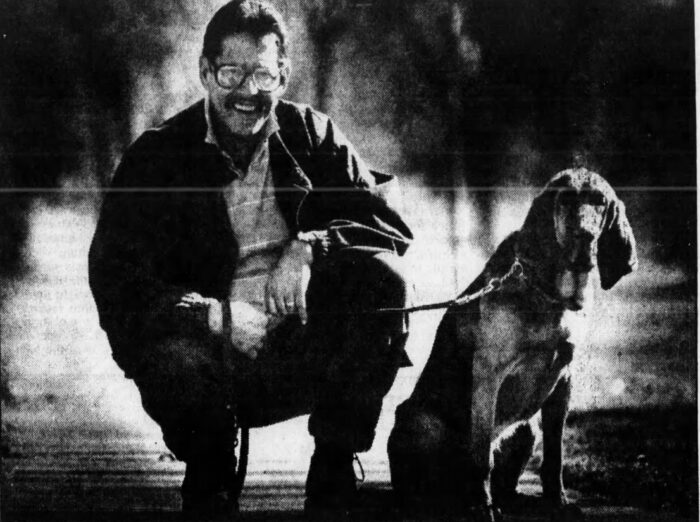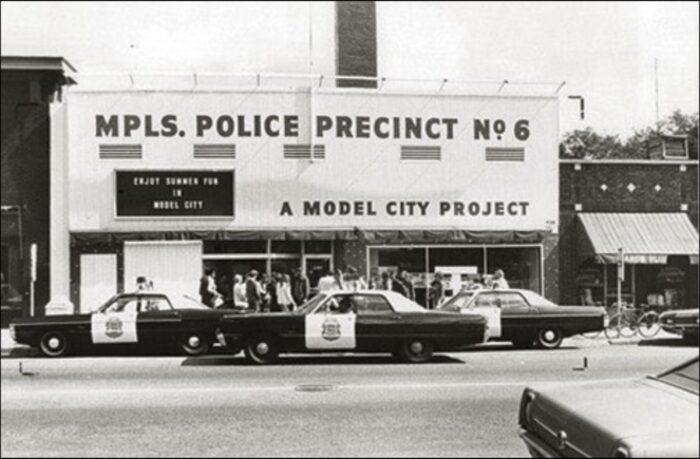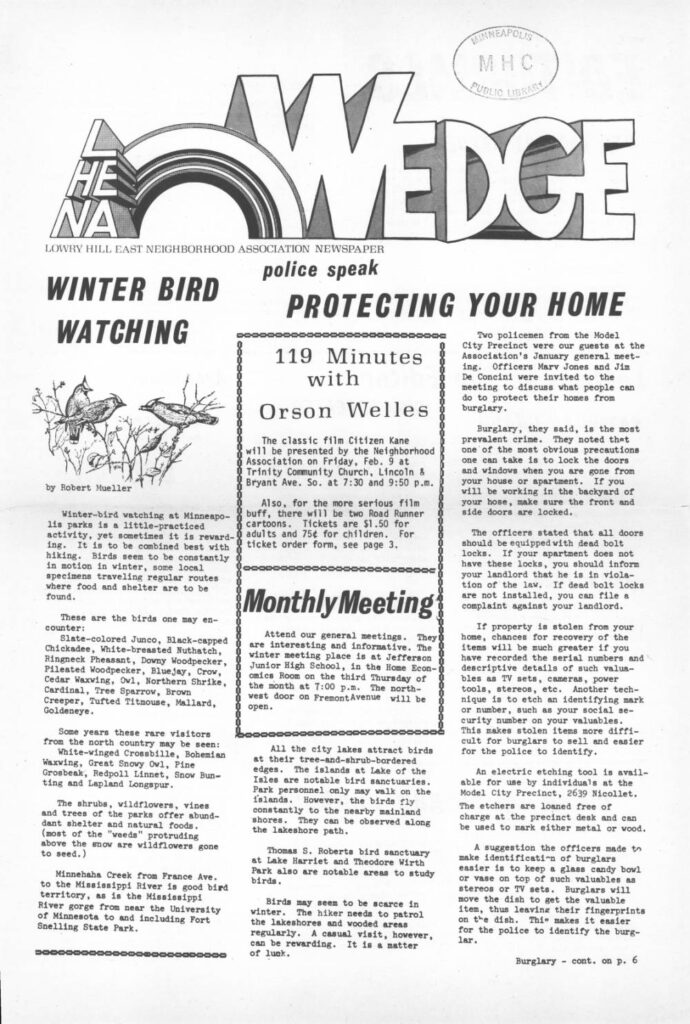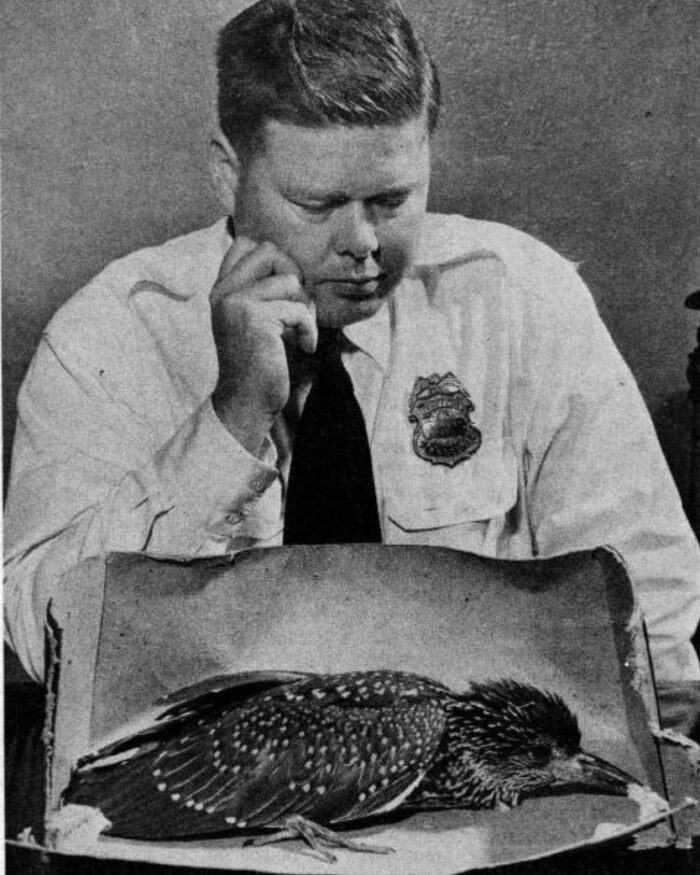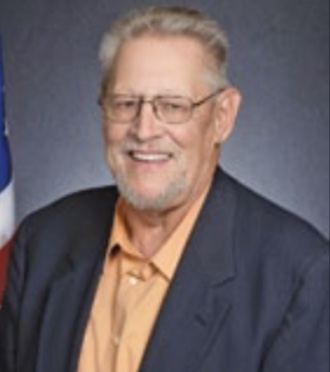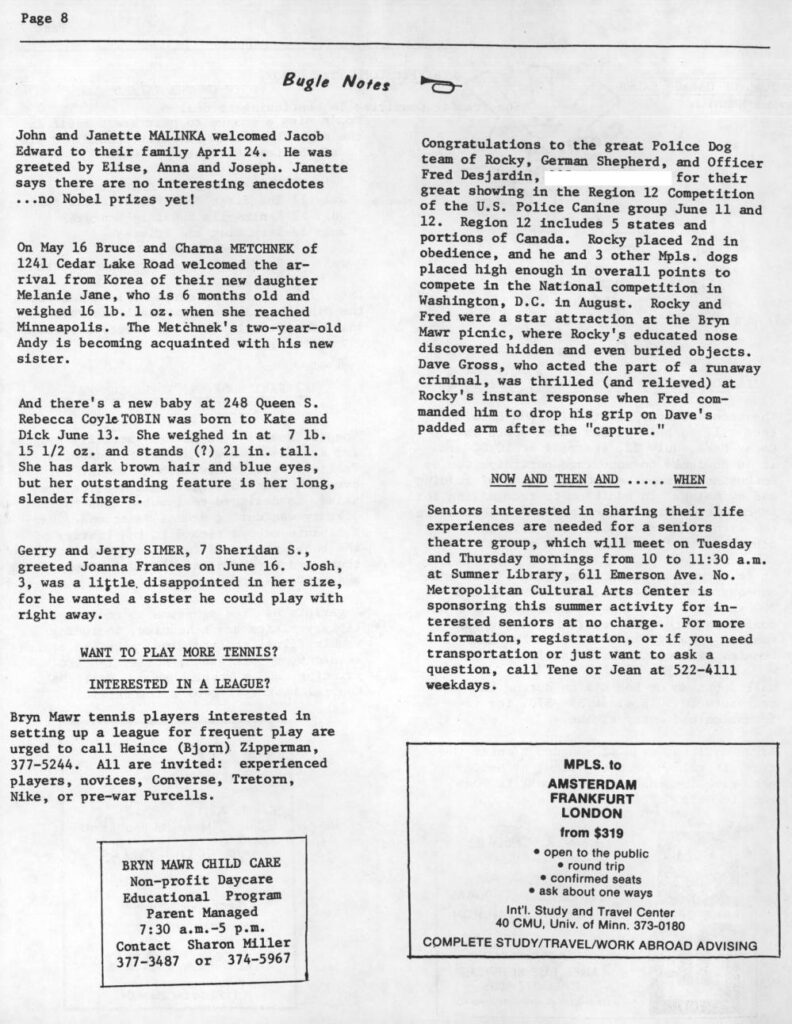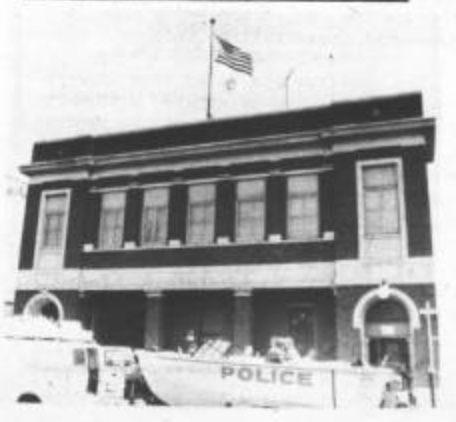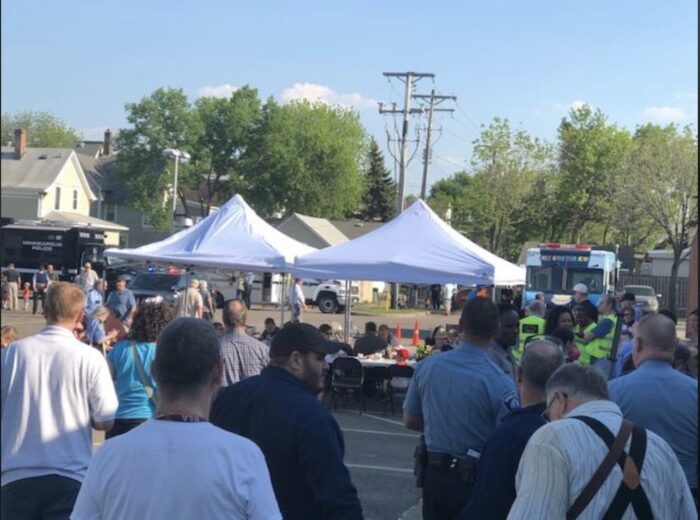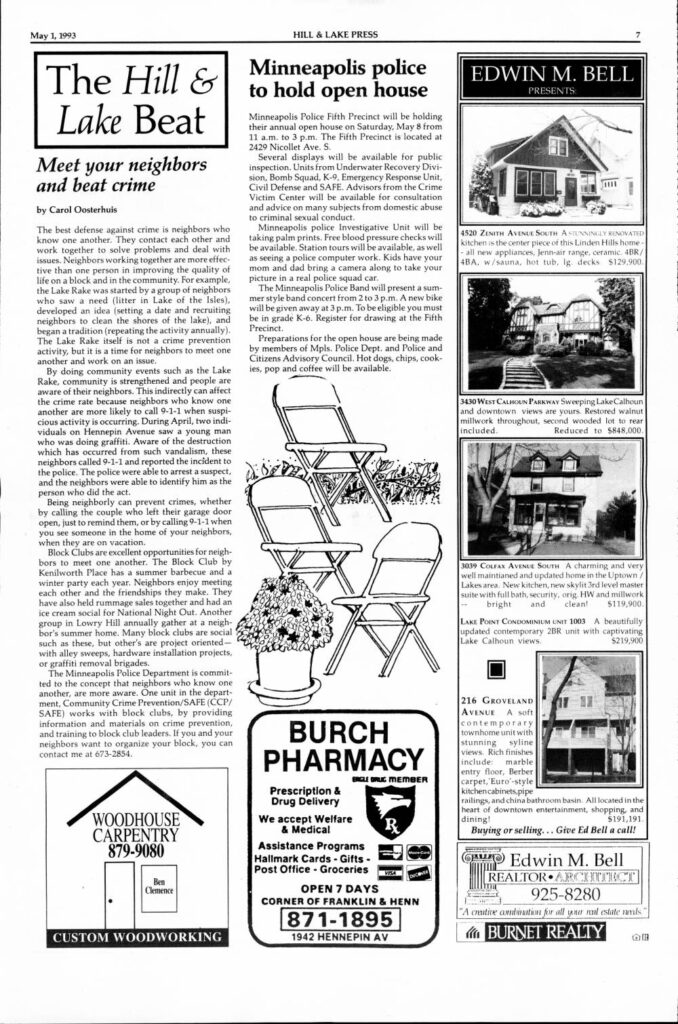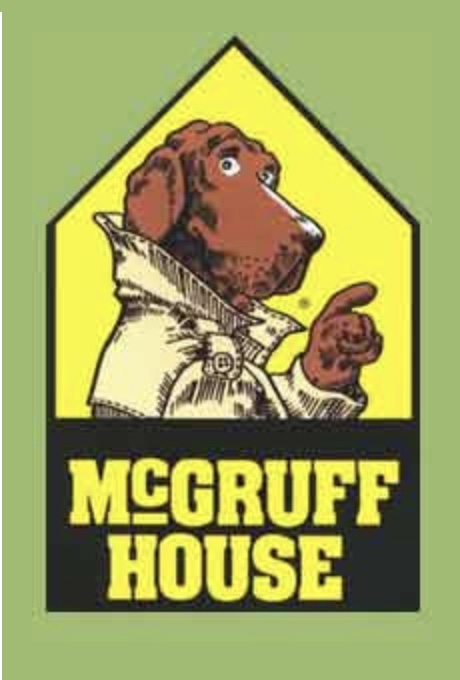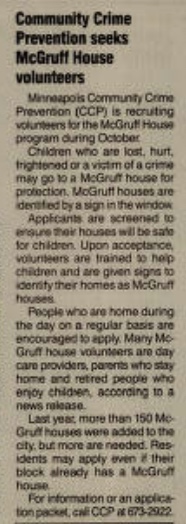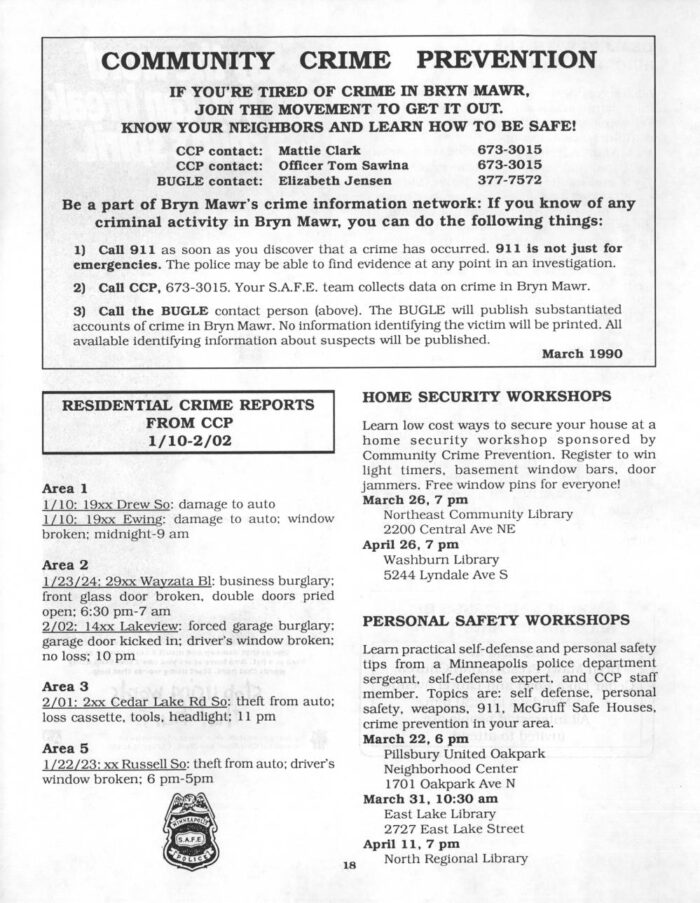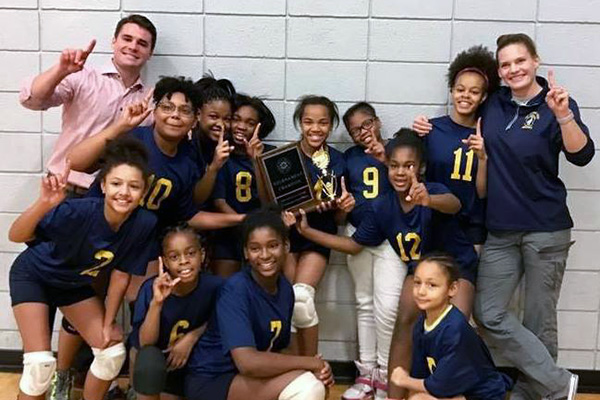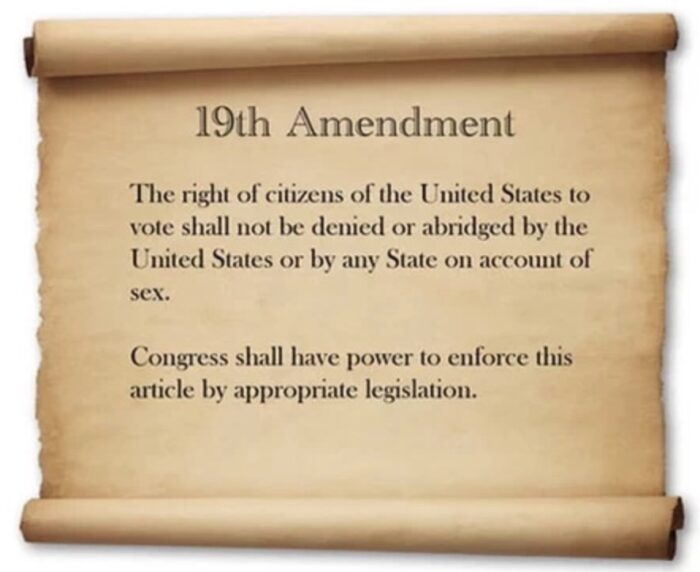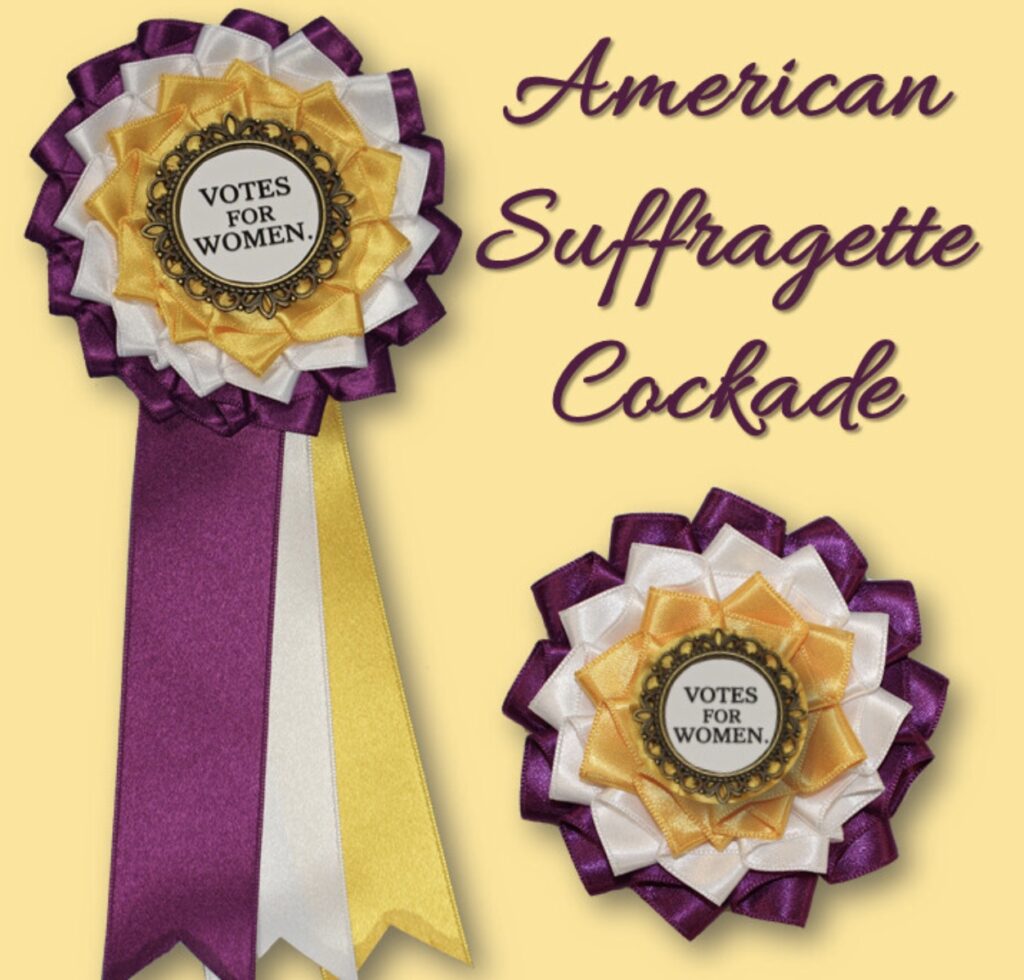“They have a way of cataloging smells in their tiny little brains, but they can’t do much other police work.”
Those were the words of Officer Fred Desjardin, in 1987, about the two new police dogs, Amos and Cy, who had recently joined the Minneapolis Police Department.
Amos and Cy were not the usual German Shepherds, or Belgian Malinois, or Dutch Shepherds that were in common use in police departments across the Upper Midwest. Amos and Cy were bloodhounds, a type of police dog which was more commonly used in the South.
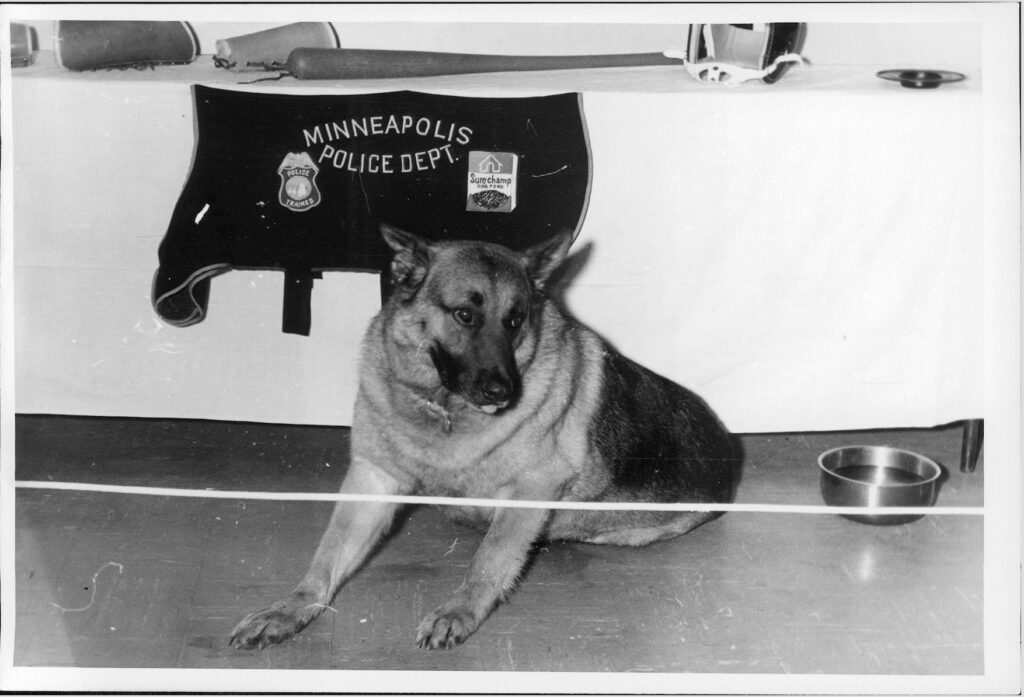
While shepherds relied upon their keen sight to help them in their searches, bloodhounds depended upon their fantastic sense of smell. While shepherds were aggressive partners to their human police partners, the bloodhounds were less assertive.
Of the bloodhounds, Officer Desjardin remarked, “If they found a criminal, they would just wag their tails.”
Because of their skills at remembering smell, Amos and Cy were used most frequently to follow trails that might be several days old. They were also skilled at searches along concrete and other hard surfaces where shepherds sometimes failed.
Amos and Cy trained in Kansas City before going on duty with the Minneapolis Police Department. Amos was the K9 partner of Officer Desjardin and Cy was the K9 partner of Sergeant Jerry Larson who was the head of the K9 Unit.
Story idea by Retired Officer David Niebur
Quotations and photograph of Officer Desjardins and Amos courtesy of Minneapolis StarTribune of April 3, 1987
